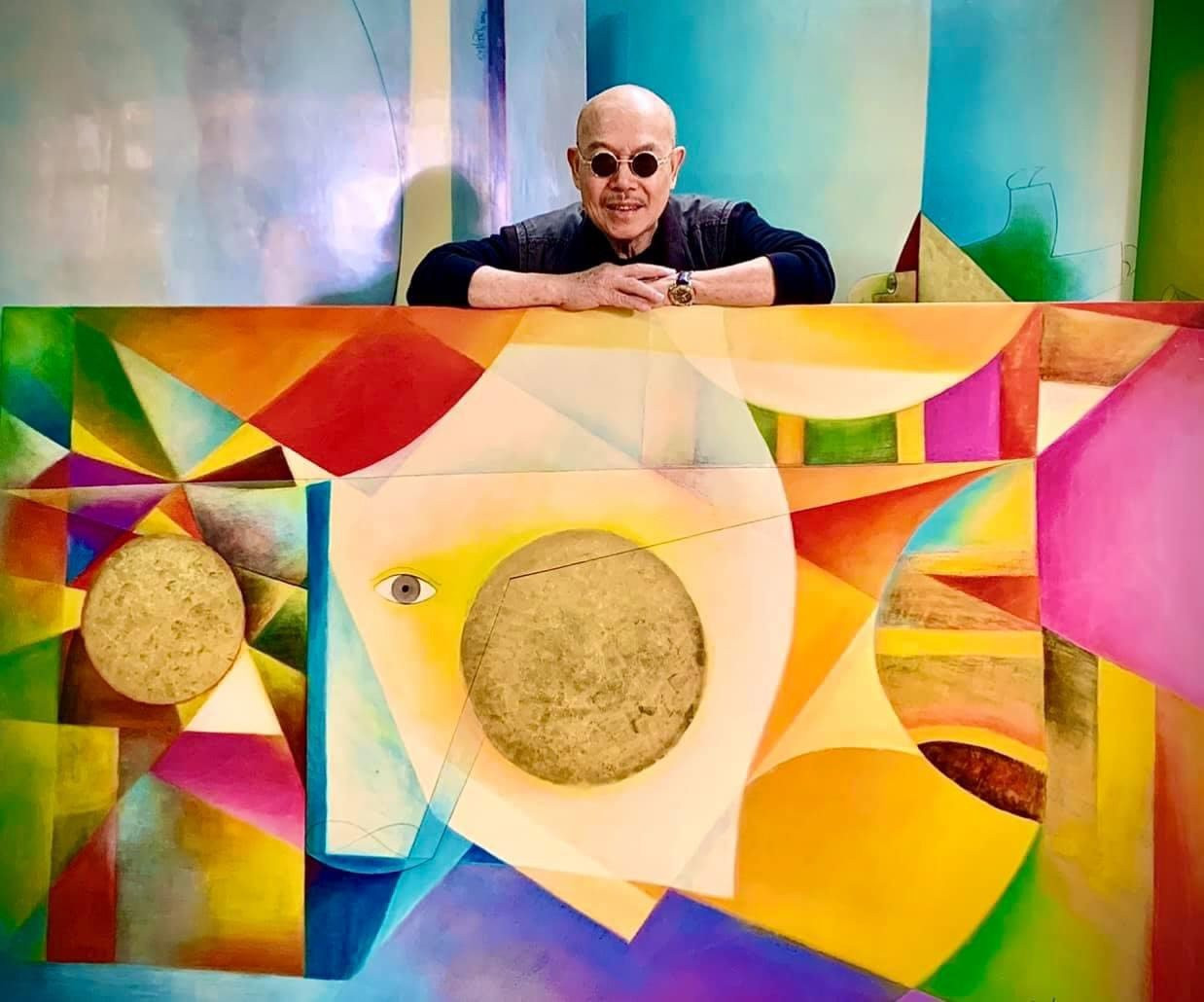
In the galleries of many artists, even though Thanh Chuong's paintings do not have the artist's name, viewers can still immediately recognize which works are his. People can recognize them because style is the exaggeration of form. Looking at Thanh Chuong's paintings, I admire his own aesthetic form, which only he can create.
1. When admiring works of art, for easy identification and explanation, I have a habit of dividing their overall form into two basic types. In the first type, the overall form of the work is created by accurately “imitating” and “imitating” (“mimésis” - a term of ancient Greek aesthetics) objects and phenomena of life, making them appear exactly as real before the eyes of the viewer. When exposed to works of art following this trend, we only see the real reality outside of art, absorbed in admiring its beauty, without seeing the artistic reality in its own form. But the history of art is the history of the struggle for the right to create the fabricated, the unreal.
This struggle has been going on silently since ancient times, through the Middle Ages and into modern times, especially since the emergence of modernism, when it erupted into revolutions.
As a result, consciousness is replaced by the unconscious, the subconscious; the absurd reigns supreme and the art of “mimesis” gives way to the art of combination. As a result, the unreal becomes the main means used to create artistic authenticity and depth of aesthetic perception.
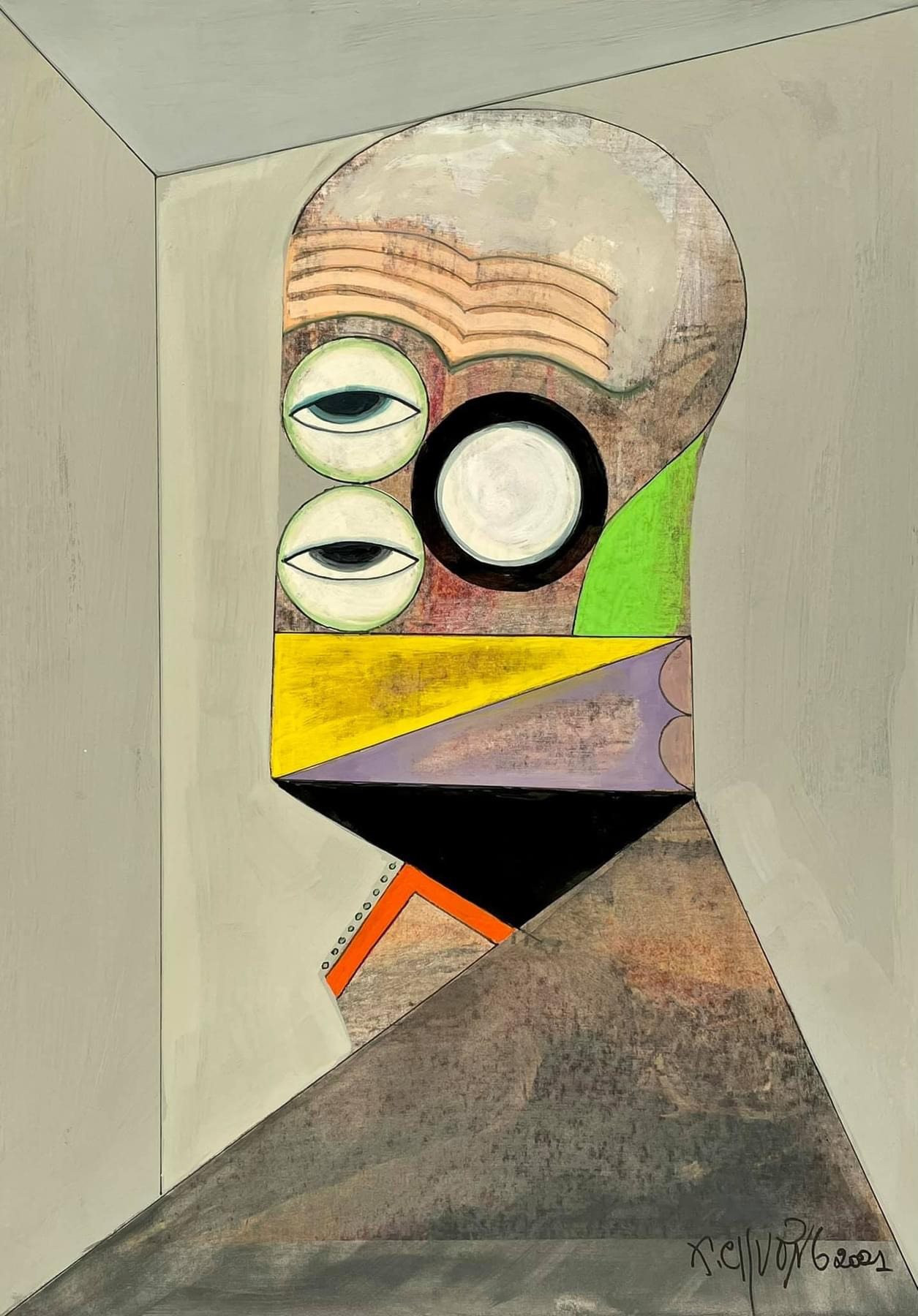
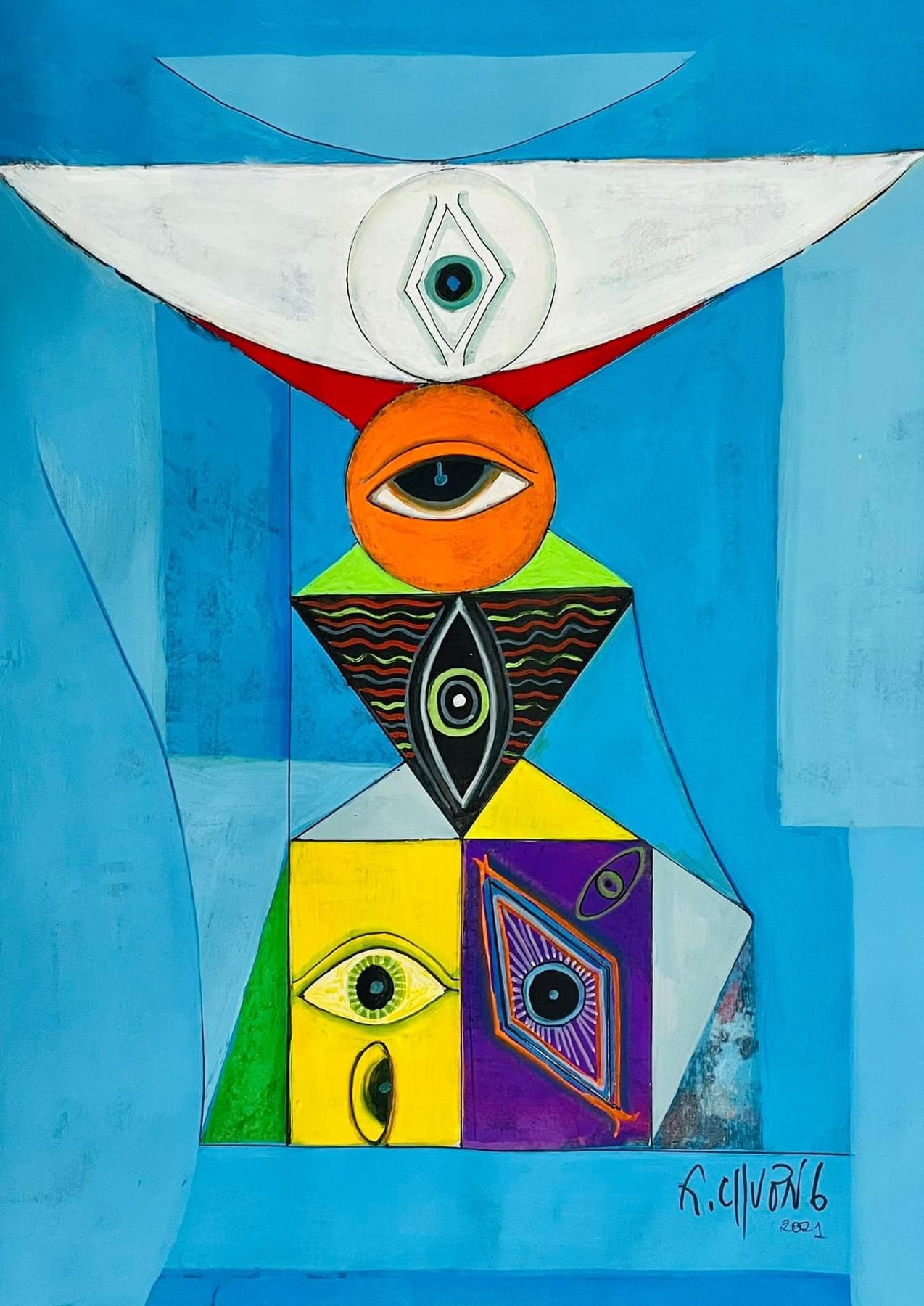
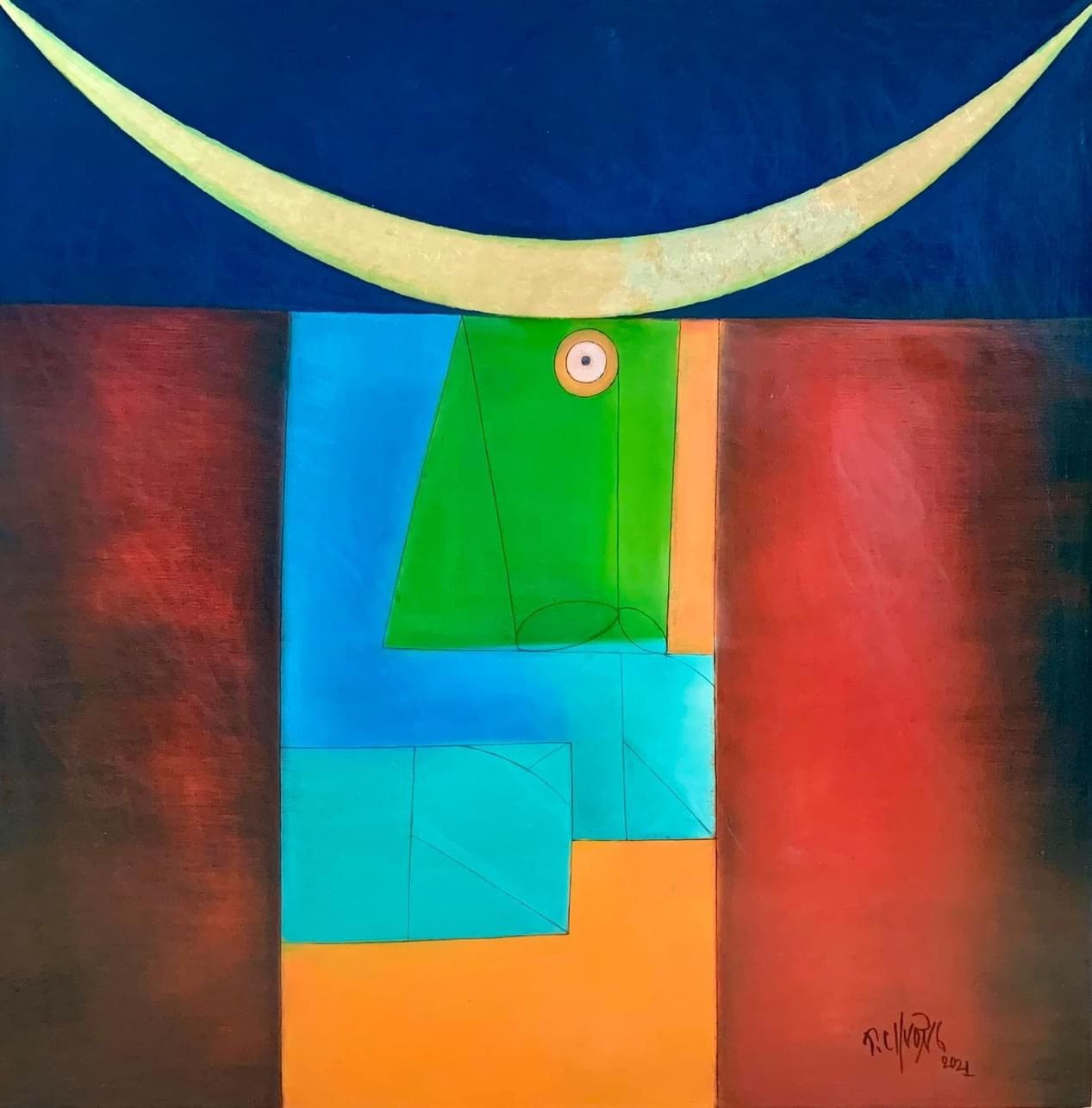
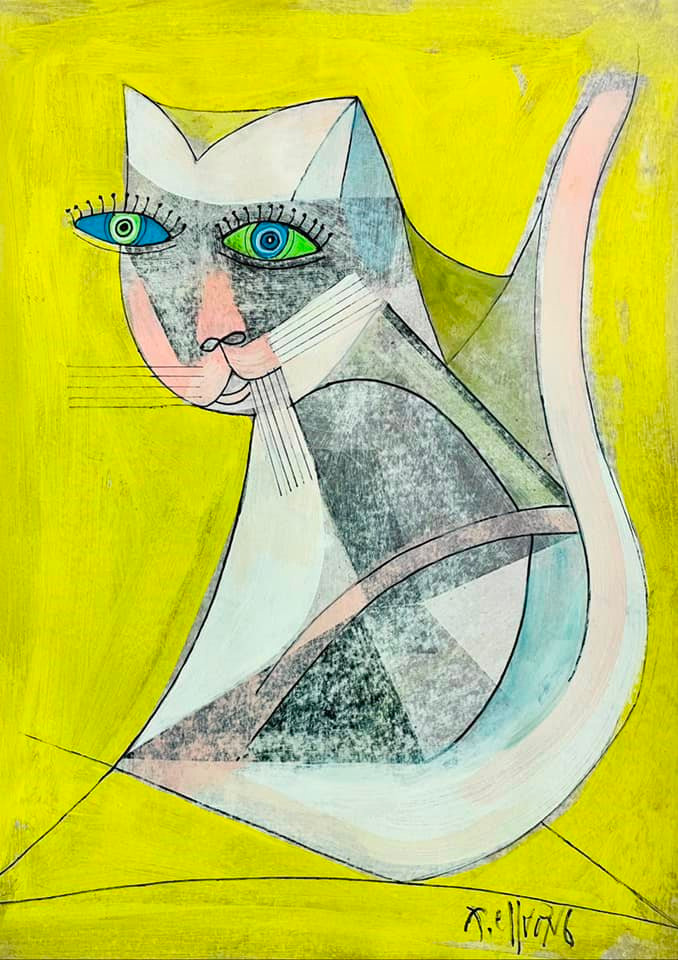
The paintings of Thanh Chuong that I have had the opportunity to admire all organize the overall form of the work in this second way. Coming to his works, we encounter paintings that only suggest the abstract model of the object, not the shape of the object itself. Therefore, the Long Bien bridge in his paintings has nothing in common with the Long Bien bridge that we know and see in real life. When looking at his paintings "Y Ty Landscape" or " Ha Giang Land and People", surely no one would think that it is Ha Giang, Y Ty if they did not look at the title written in the corner of each work.
In his works, all objects and phenomena of life become his own objects and phenomena, into new structures, sometimes extremely absurd, so for the viewer, they become “others” that only thanks to his art can they be known, seen for the first time. In that sense, Thanh Chuong’s paintings belong to the scope of modernist fine art.
2. The art of “imitation” and “simulation” is a game played according to existing rules. Modern art and modernism are games whose purpose is to create something unique.
It plays by rules that have never been seen before. Its rules are set by the players along with the playing process. Those are the rules of the creative personality that make up the artist’s own style. Playing by such rules, Thanh Chuong’s works are difficult to “read”.
My way of “reading” is an attempt to analyze the rules of the game in the author’s creative process. I find these rules in Thanh Chuong’s point of view system and the world image created from that point of view system.
Painting is a visual art, so the point of view is extremely important. Thanh Chuong has a series of paintings that he named “Thien Nhan” and I think that is also his perspective on the world. I find that Thanh Chuong’s concept of “Thien Nhan” is very different from the concept of “Thien Nhan” of Christianity, Cao Dai, or secret societies such as Freemasonry, Illuminati. The most important difference here is that Thanh Chuong’s “Thien Nhan” paintings are inspired by animism, which originated in prehistoric times in folk culture. Accordingly, “Thien Nhan” is first of all “spiritual eye”, it is synonymous with “spiritual perception”, so all human senses can become “Thien Nhan”. “Thien Nhan” is also the eye of all creatures: the universe has “Thien Nhan”.
Thanh Chuong created a symbol of "Thien Nhan" present everywhere with a pair of eyes, one round - one flat, or one vertical - one horizontal, extremely funny, expressing the wit of folk culture.
In summary, it can be said that in Thanh Chuong's works, "Thien Nhan" is not only a descriptive object, but also a point of view into the world of the creator. Deeply rooted in folk culture, Thanh Chuong's concept of "Thien Nhan" becomes an artistic philosophy, creating depth of thought and consistency of style in his works.
Looking at the universe through the prism of “Thien Nhan”, Thanh Chuong’s paintings open up before the viewer’s eyes an image of the world in the mind, from memories emerging. Every painting by Thanh Chuong is like a recollection of a past memory. The world in his works is a world of memories, a world of dreams. He painted “Red Dream”, “Afternoon Dream”, “Sweet Memory”.
During the suffocating days of social distancing due to the Covid-19 pandemic, he painted Y Ty in his memories and named the painting “Remembering Y Ty”. I believe that the Long Bien bridge in many of his wonderful paintings is the bridge of dreams about an ideal beauty.
I think he creates images in his paintings not to tell or describe something, but to express the elusive content of dreams about a distant time. “Com Moon”, “Clear Moon”, “Sunny Day”, “Happy Day”, “Playing with Buffalo”, or “A Couple of Lovebirds”, “A Couple of Young Friends” are all images of dreams about things that only remain in memory. Sometimes he also paints memories of very recent events, such as the memory of “The Girl Who Opened the Road”, or the memory of “Going Home”, “Sitting Still During Covid”…
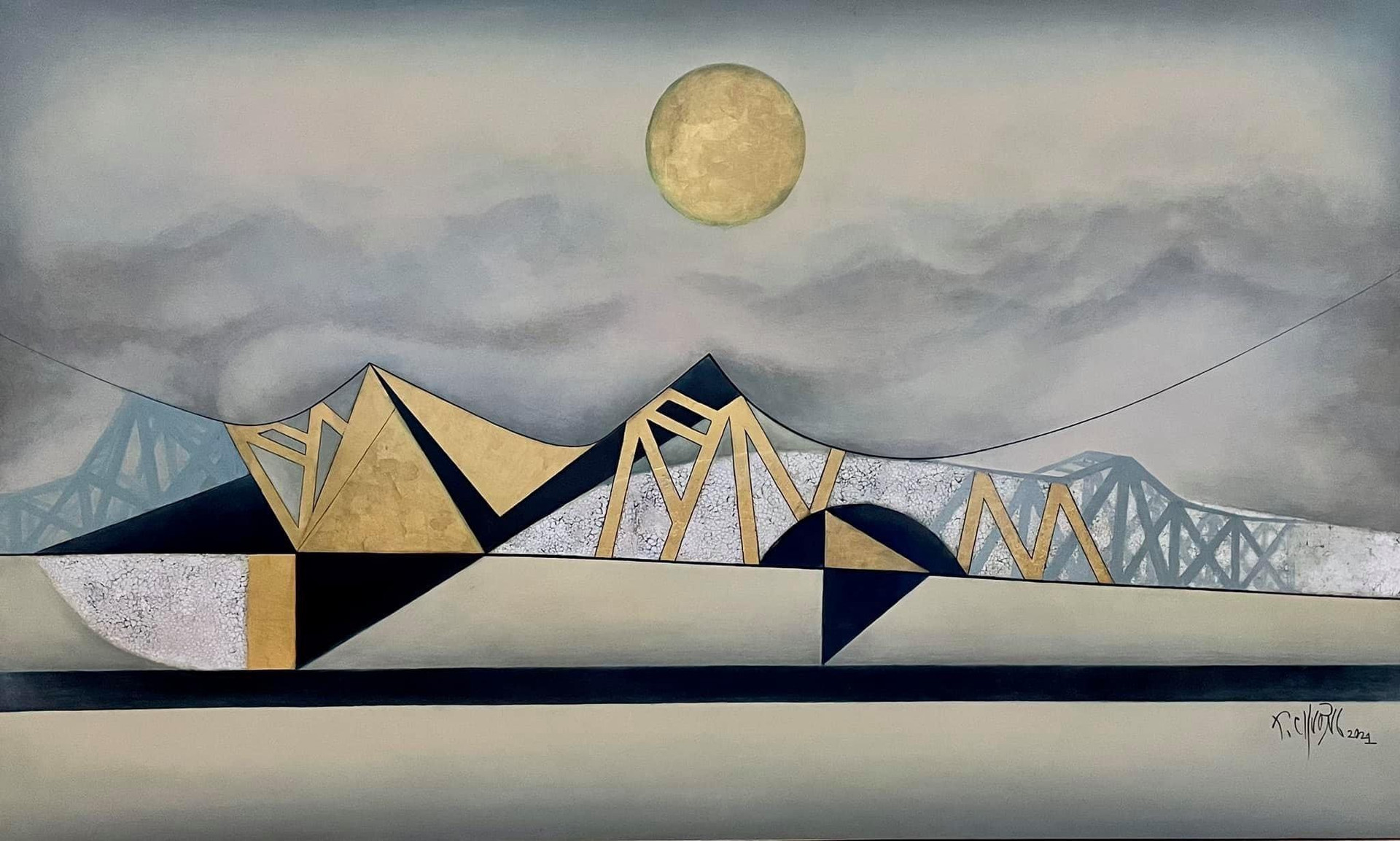
The basis for creating the world image in an artistic text is the artist's social relationship with real life. No matter how diverse the artist's social relationship with real life is, it can still be classified into three types, each type providing the world image with a type of content that makes up the genre of the work: nation - history, customs - world affairs and private life. The largest area, which most clearly demonstrates Thanh Chuong's artistic style, is landscape and customs. Customs are worldly relationships that have formed into a stable state.
I remember, in 1957, the boy Nguyen Thanh Chuong, only eight years old, brought “The Stupid Chicken Pair” to the world in the international children’s painting exhibition held in England. And the work won the grand prize: the Gold prize. “The Stupid Chicken Pair” is an allegorical painting of the peaceful, harmonious, and loving human state of the world of children, seen through the lens of children. Looking at this painting, I secretly thought that the folk painting line originating from the famous painters of the “Indochinese fine arts” generation with “Playing O An Quan”, “The Rice Seller”, “The Snail Seller” by Nguyen Phan Chanh; “Wrestling”, “Buffalo Fighting” by Nguyen Sang; “Playing Chess Under the Bamboo Shade” by Nguyen Tu Nghiem… did not dry up or break the thread thanks to the very early appearance of Thanh Chuong.
I think Thanh Chuong is conscious and confident in the path he has chosen since childhood. In 2017 alone, Thanh Chuong painted countless chicken paintings. 60 of them were chosen by him for the Exhibition commemorating the 60th birthday of “Doi Ga To” which resonated in the art community. He has thousands of paintings of buffaloes with shepherds. Those are the paintings that bring fame to a great style.
Thousands of paintings of buffaloes, chickens and other zodiac animals, along with a series of paintings of Long Bien Bridge, with “Clear Moon”, “Green Rice Moon”, “Sunny Day”, “Happy Day”, “Y Ty Landscape”, or “Ha Giang Land and People” have placed Thanh Chuong in the leading position of landscape and customs paintings in the Vietnamese fine arts village.
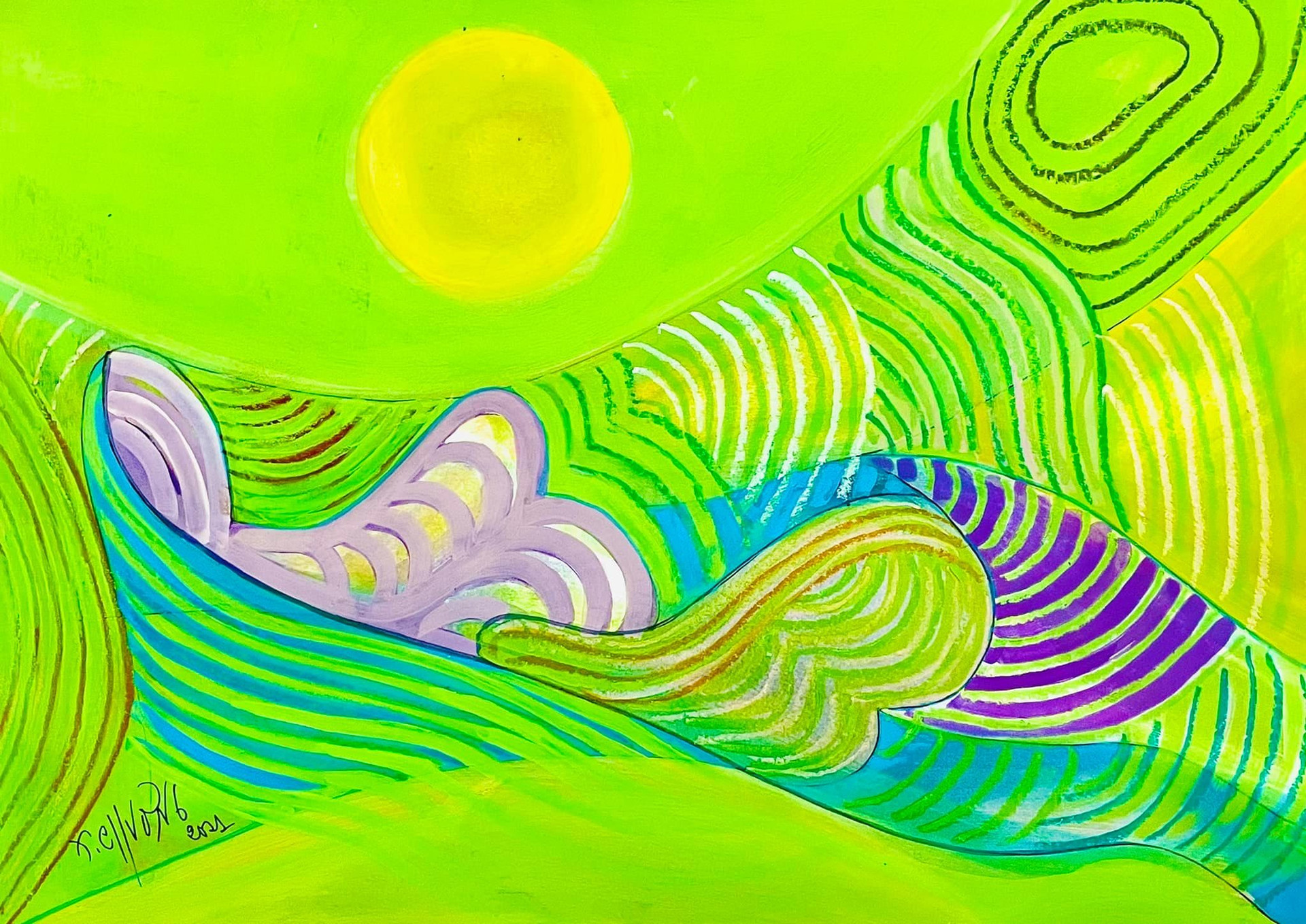
The image of the world in a work of art is always wrapped in aesthetic inspiration. It is aesthetic inspiration that turns the image of the world in art into value structures with a symbolic function. Viewers of paintings recognize the trends of aesthetic inspiration through four basic categories: tragedy, comedy, beauty and sublimity. Almost all of Thanh Chuong's works come together to express the inspiration of beauty.
As a leading painter of folk paintings, Thanh Chuong spent his whole life using shapes, lines and colors to sing about the beauty of human love. Looking at his paintings, I felt like I was listening to the pure and romantic songs with the sound of Cheo singing and Quan Ho melodies about love, childhood friendship, family love and above all, the love of the countryside with chickens, buffaloes, wharves, dikes, ancient temples and pagodas and festivals with colorful flags fluttering and the bustling sound of village drums.
Thanh Chuong painted landscapes, such as Y Ty, Ha Giang, the scene of the young rice moon, the clear moon, the young moon, the scene of shepherds looking up at the moon, playing with buffalo, with kites, flutes... also to sing about the beauty of the countryside. Thanh Chuong's paintings only evoke the idea of beauty, but the beauty still appears clearly with many different aesthetic nuances. I really like the radiant beauty of Y Ty, or the beauty of "Ha Giang land" like a young girl lying in the sky and clouds of the fields, especially the fertile beauty in the painting "Nature Palace", or the painting "Sprout of Life"...
As mentioned, the image of the world in Thanh Chuong's paintings is an image in a dream, appearing from memory. In the artist's dream, all beauty becomes the embodiment of the ideal, lasting through time. They appear there bustling, but also deserted, as if always wearing a shirt woven with sadness tinged with nostalgia.
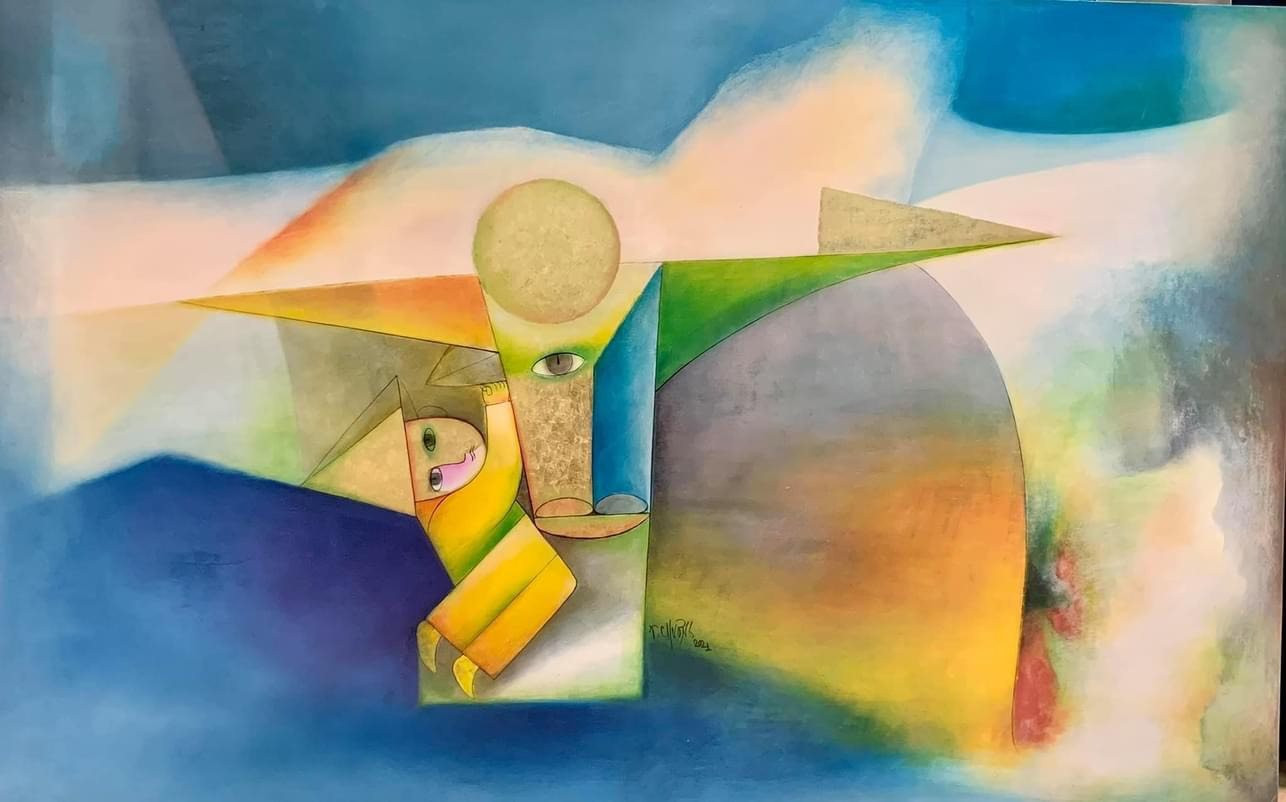
3. To conclude the article, I cannot help but say a few words about the visual language in Thanh Chuong's paintings. I find that his visual language has two outstanding points:
First, the organization of closed space in absolute past time. Painting is the art of space. Spatial organization is its most important language. Each style often has its own unique way of organizing artistic space, for example, Renaissance painting places the world in cosmic space, 17th century classicism painting creates living space - worldly affairs, paintings and sculptures of socialist realism turn human existence space into front space, road space, all closed in themselves.
Thanh Chuong's paintings also organize space into his own language. He uses densely natural color motifs imbued with folklore and sculpture motifs of temple reliefs to create the idyllic space of a traditional Vietnamese village. There, metaphorical images are created through unexpected, yet familiar, implicit comparisons and associations: children are shepherds playing with buffaloes, kites, and flutes; the moon is a round halo of light, sometimes like a ball, sometimes like a plate or a tray; the buffalo's back is the roof of a house...
Such metaphors create a closed space. This closure gives the possibility of expressing time: it suggests an absolute past, everything of value belongs to that past, in which there is no way to communicate with our ongoing, very busy, and very complex contemporary.
Second, using symbolic and surrealist syntax to create “code language”. I have this comment: If symbolic and surrealist poetry turns poetry into music; then surrealist art turns painting into poetry. That is why I call Thanh Chuong a surrealist poet. His works are full of poetry. He writes poetry with colors, lines, and shapes.
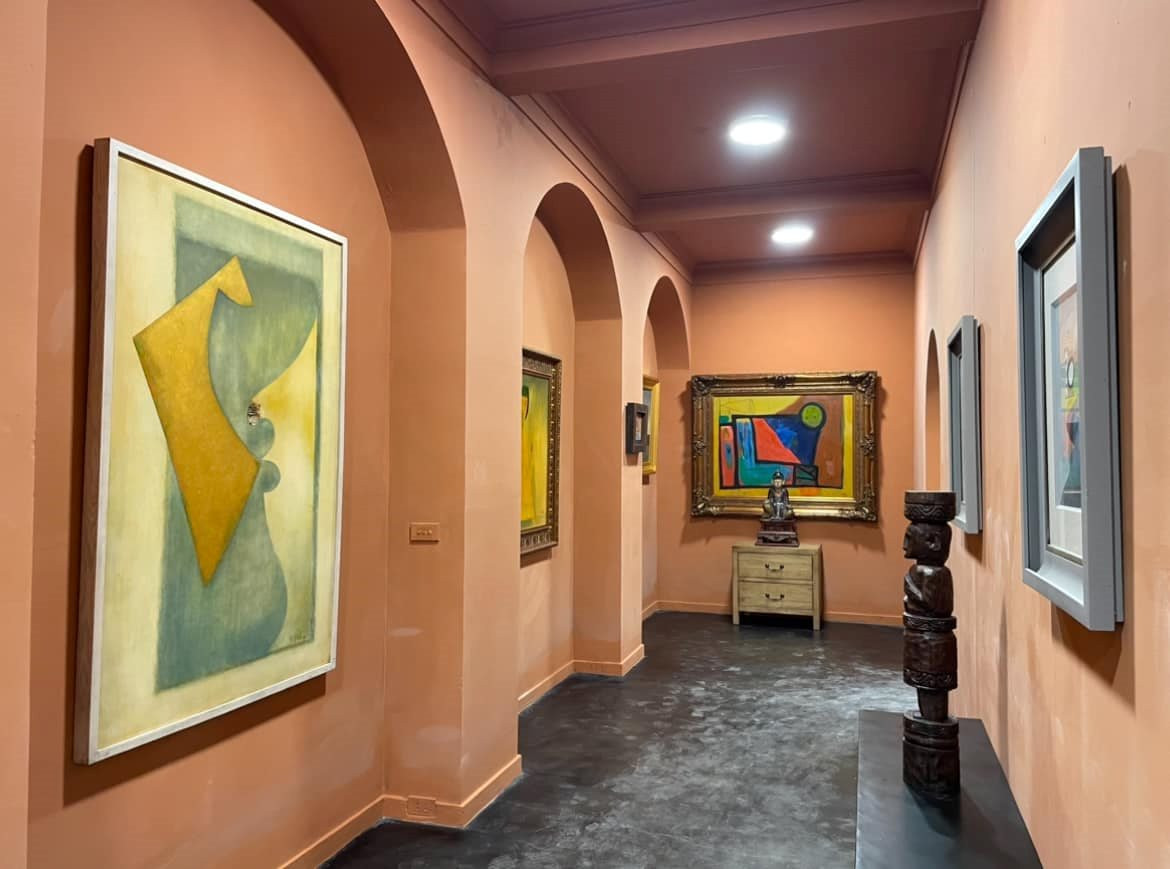
Thanh Chuong's painting language is also organized according to the same principle. We recognize the syntax of Thanh Chuong's paintings through the axis of the system with the author's dense use of relief sculpture motifs, folk colors, triangles, squares, circles, cylinders, cubes, triangular prisms, free-form lines on flat panels. But instead of using stylized colors, Thanh Chuong uses a natural color palette.
In his paintings, the relationship between symbols and familiar meanings is erased, lines and shapes are often distorted, overlapping, losing the ability of the visual senses to perceive them according to common logic. Therefore, the same colors, lines, and shapes, when separated, everyone can clearly recognize them, but when combined together, they form a vague, polysemous, poetic, but also very difficult to understand overall structure. I call that language Thanh Chuong's secret language.
Thanh Chuong's paintings create a prominent overall form with its own materials, its own perspective and a world image wrapped in a very unique aesthetic inspiration trend. He uses familiar means of creation, organizes them in a subtle and creative way, encodes them into a kind of language like a "secret code", "reading" his paintings with that language, we see the meaning of the work both persistently revealed and stubbornly evaded.
Many people are also fascinated by Thanh Chuong's paintings because of the radiant, yet illusory beauty of a hypertrophied form. But I believe that no one dares to assert that they can fully understand his works.
Artist Thanh Chuong is also known as the creator of Viet Phu Thanh Chuong space in Hien Ninh commune, Soc Son district, Hanoi . Coming here, we seem to be lost in an ancient, isolated space consisting of about 30 large and small works, recreating the quintessence of Vietnamese culture in terms of architecture, culture and spirituality.
In 2012, Viet Phu Thanh Chuong was praised for the wonderful beauty of its nostalgic structures in the New York Times (USA).
After more than 20 years of construction, Viet Phu Thanh Chuong has become a destination for many domestic and foreign tourist groups.
In early spring of Giap Thin 2024, artist Thanh Chuong completed the "Living in Art" Museum located in Viet Phu. Here, artist Thanh Chuong's works on many different materials and sizes, created in many different periods, are introduced to the public.
NTB
Source


![[Photo] Ho Chi Minh City holds funeral for former President Tran Duc Luong](https://vphoto.vietnam.vn/thumb/1200x675/vietnam/resource/IMAGE/2025/5/24/9c1858ebd3d04170b6cef2e6bcb2019e)
![[Photo] The Government Standing Committee works with ministries and branches on the real estate market situation.](https://vphoto.vietnam.vn/thumb/1200x675/vietnam/resource/IMAGE/2025/5/24/e9b5bc2313d14c9499b8c9b83226adba)




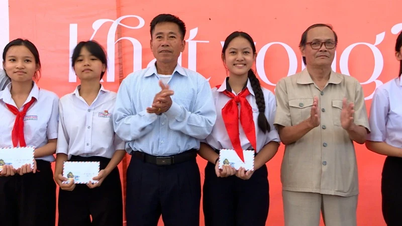

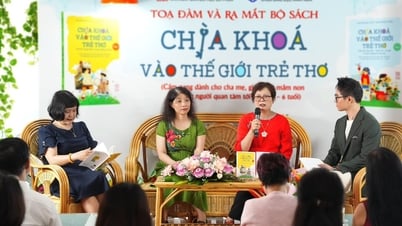



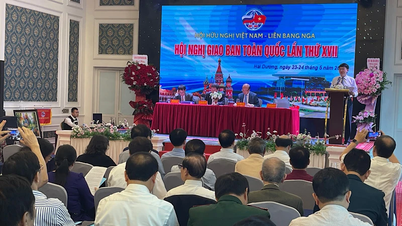


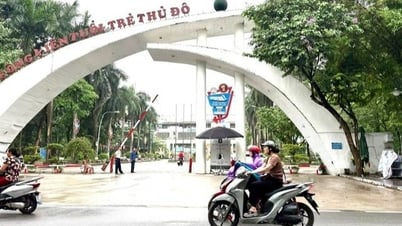








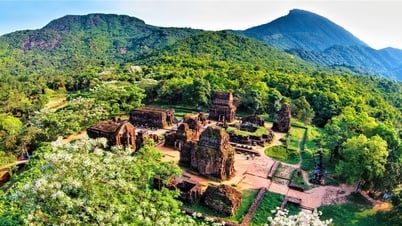



![[Photo] Party and State leaders visit former President Tran Duc Luong](https://vphoto.vietnam.vn/thumb/1200x675/vietnam/resource/IMAGE/2025/5/24/960db9b19102400e8df68d5a6caadcf6)











































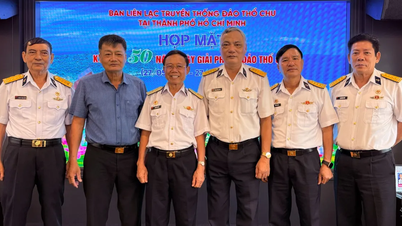



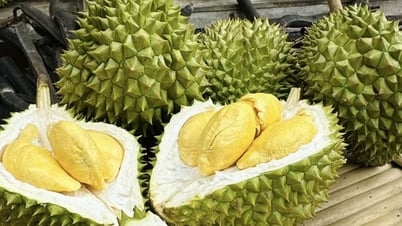

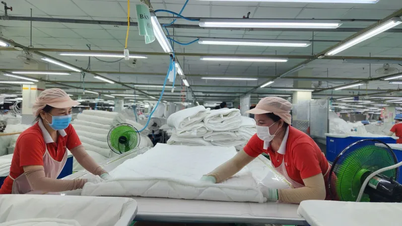
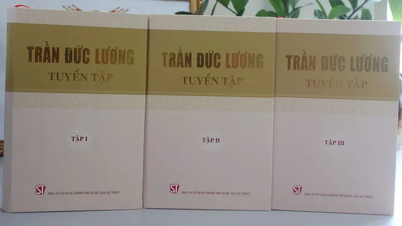
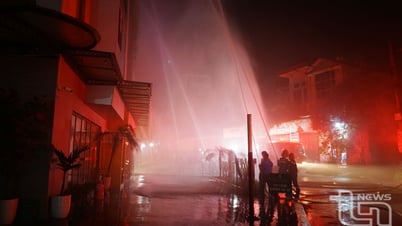












Comment (0)